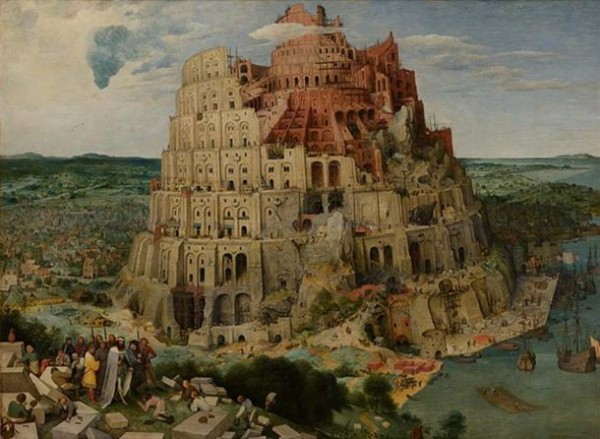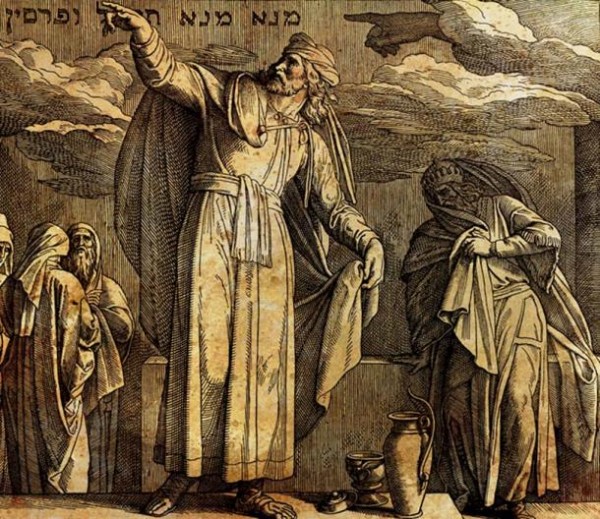
The Tower of Babel by Pieter Bruegel the Elder ( Kunsthistorisches Museum Wien / Public Domain )
ishtartv.com - ancient-origins.net
By Wu Mingren, 1 DECEMBER, 2018
The fall of Babylon is a historical event that occurred in 539 BC. This event saw the conquest of Babylon by the Achaemenid Empire under Cyrus the Great and marked the end of the Neo-Babylonian Empire. The fall of Babylon is reported by a number of ancient sources, including the Cyrus Cylinder, the Greek historian Herodotus, as well as a number of books in the Old Testament.
Immense Growth Before the Destruction of Babylon
The city of Babylon is located in modern day Iraq and its history stretches back to the 3rd millennium
BC, when it was a small port town on the Euphrates River. At that time, Babylon was part of the Akkadian Empire. Over time, the town would grow and develop into one of the most important cities in ancient Mesopotamia. It was during the 18
th century BC that Babylon became a major power in the region under the rule of the Amorite king, Hammurabi. This First Babylonian Empire, however, was short-lived as it soon fell under the dominion of foreigners, including the Hittites, the Kassites, and the Assyrians.
Destruction of the Neo-Assyrian Empire
Following the death of Ashurbanipal around 627 BC civil war broke out in the Neo-Assyrian Empire, causing it to weaken. Many subjects of the Neo-Assyrian Empire seized this opportunity to revolt. One of these was a Chaldean chief by the name of Nabopolassar, who formed an alliance with the Medes, Persians, Scythians and Cimmerians. This coalition succeeded in destroying the Neo-Assyrian Empire.
Birth of the Neo-Babylonian Empire
Having gained independence from the Assyrians, Nabopolassar established the Neo-Babylonian Empire, with Babylon as its capital. The empire reached its zenith during the reign of Nebuchadnezzar
II
, who succeeded Nabopolassar in around 605 BC. During Nebuchadnezzar II’s reign, which lasted until around 562 BC, the Neo-Babylonian Empire was in control of Babylonia, Assyria, parts of Asia Minor, Phoenicia, Israel, and northern Arabia.
How Did Babylon Fall - Did Nabonidus’ Rule Contribute to the Destruction of Babylon?
The kings who succeeded Nebuchadnezzar II were much less capable than him and had rather short reigns. In the decade that followed Nebuchadnezzar II’s death, the Neo-Babylonian Empire had four different rulers, the last of whom was Nabonidus, who reigned from 556 BC to the fall of Babylon in 539 BC. Nabonidus reigned for a total of 17 years and is remembered for his restoration of the region’s ancient architectural and cultural traditions, hence earning him the nickname ‘the archaeologist king’ among modern day historians. Nevertheless, he was unpopular with his subjects, especially the priests of Marduk, as he had suppressed the cult of Marduk, the patron god of Babylon, in
favor of the moon god Sin.
When Did Babylon Fall?
In the meantime, the Persians to the east were growing in power under the leadership of Cyrus the Great. In 549 BC, the Medes were defeated by the Persians, who then proceeded to conquer the territory around Babylon. Finally, in 539 BC, the city of Babylon itself was taken by the Persians. The fall of Babylon marked the end of the Neo-Babylonian Empire. The momentous event has been recorded by a number of ancient historians, though due to inconsistencies, it is difficult to reconstruct the actual events that took place.
The Greek writers Herodotus and Xenophon report that Babylon fell after it was besieged. On the other hand, the Cyrus Cylinder and the Nabonidus Chronicle (which is part of the Babylonian Chronicles ) claim that Babylon was conquered by the Persians without a fight. Moreover, the Cyrus Cylinder presents the Persian king as chosen by Marduk to capture Babylon.
The Fall of Babylon Prophecy – What Story Does It Tell?
Lastly, the fall of Babylon is significant for Biblical history as it is mentioned in a number of books in the Old Testament. In the Book of Isaiah, a story similar to that found in the Cyrus Cylinder is told. Instead of Marduk, it was the God of Israel who chose Cyrus. After the fall of Babylon, the Jews, who had been exiled since their subjugation by Nebuchadnezzar II, were allowed to return home. In another book, the Book of Daniel, the fall of Babylon was already prophesized during the reign of Nebuchadnezzar II. According to this book, the king had a dream, in which he saw a statue with a head of gold, breasts and arms of silver, belly and thighs of bronze, legs of iron, and feet of iron mixed with clay. The statue was destroyed by a rock, which then turned into a mountain filling the whole earth. The interpretation of the king’s dream by the prophet Daniel was that the statue represents four successive kingdoms, the first of which being the Neo-Babylonian Empire, all of which would be destroyed by the Kingdom of God.

The writing on the wall, Daniel and king Belshazzar, the fall of Babylon bible story. (fluenta / Adobe)
|